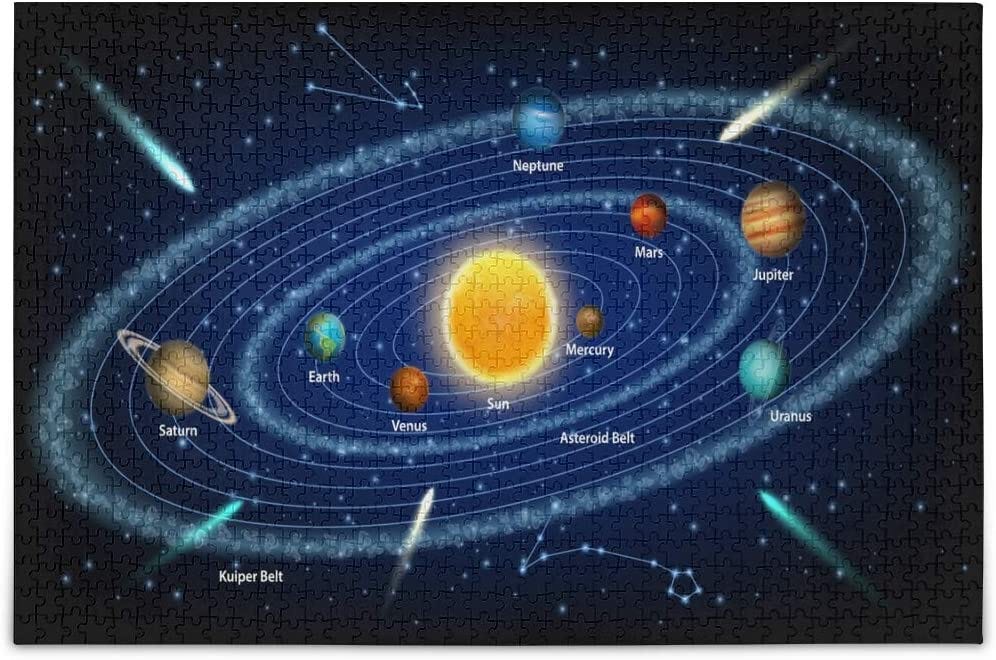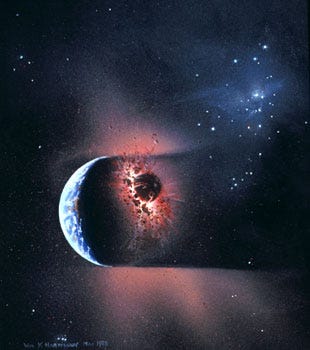CONTENTS — FIND IN PAGE
I previously discussed the supercontinent Pangaea Breakup at cataclysmicearthhistory.substack.com/p/127-pangaea-breakup-disaster
Now we can back up to the event that formed Pangaea in the first place.
Charles Chandler wrote about this at http://qdl.scs-inc.us/?top=15407. Mike Fischer did at http://newgeology.us/presentation44.html. Creationists wrote at https://creation.com/ formation of the earth: (https://creation.com/origin-of-life-critique, https://creation.com/inner-core-conundrum, https://creation.com/trial-balloons-geochronology, https://creation.com/radiometric-dating-age-of-earth etc.)
CHARLES CHANDLER’S MODEL
EARTH'S INITIAL MOLTEN STATE. It's plausible that Earth and other planets formed from a molten state. Mainstream (=amateur) science assumes that the Nebular Hypothesis correctly describes star and planet formation via gravitational collapse of a large cloud of dusty plasma in space, but Charles Chandler showed at http://qdl.scs-inc.us/?top=12692 and http://qdl.scs-inc.us/?top=15482 that it was surely via electrical collapse, not gravitational.
GRANITE & BASALT CRUST. Earth's surface consists of solid crustal rock. The ocean basins are mostly basalt, while the continents are mostly granite, but presumed to be floating on a denser molten or plastic basalt layer. Why did the lighter, originally molten, granite not spread out and cover all of the denser basalt? Apparently, the granite was not originally in the Earth. It arrived later.
PLANET COLLISIONS. The Asteroid Belt between Mars & Jupiter looks like debris from a collision, that left asteroid Ceres as the biggest remaining piece of a former planet. Much of the debris would likely have fallen into the Sun, or impacted other bodies, which could account for the so-called Late Heavy Bombardment (LHB), which cratered planets, moons, asteroids & maybe comets.
REMELTING. The LHB impacts likely remelted the crusts of the Earth, the Moon, and Mars, leaving many craters on the latter two, as well as large flood basalt mares with few craters, due to magma flow covering up craters. Heat from impacts and from impact-caused Sun {or Saturn} flares would have produced extensive melting.
EARTH'S REMELTED CRUST. Rocks apparently pre-dating the LHB are found in the highlands of the Moon and Mars, but not on Earth, which indicates that Earth's crust possibly remelted completely. {But dating methods are unreliable.}
SUPERCONTINENT FROM ASTEROID. Earth's continents could be the remains of a granite asteroid. The continental granites have a volume of 7.58 × 10^9 km^3 (which equals ca. 5,200 km in diameter), which is just 0.69% the volume of the Earth (1.08 × 10^12 km^3), but 1/3 the volume of the Moon (2.20 × 10^10 km^3), and 20 times the volume of asteroid Ceres (4.21 × 10^8 km^3), so the impacter would have been the largest asteroid of all. It would explain the granular nature of the continental granites, which are like shock crystals, with lots of chemical differentiation (variation in chemical contents). It lacks fractional crystallization that occurs when magma cools slowly under gravity.
OCEAN WATERS. Water from Earth's initial molten state would have floated to the top of the atmosphere and would have separated into oxygen and hydrogen. The hydrogen would have floated out into space and the oxygen would have sank to the lower atmosphere, making it the main constituent. So the present ocean water must have arrived after the Earth cooled down, probably on the same asteroid that formed the granite continents. C-type asteroids can contain up to 22% water, and 75% of all asteroids are this type, including Ceres. Asteroids are 78%+ rocky matter that can be shock-melted to produce granites. The proposed impactor would have been 85% granite and 15% water. This paper http://adsabs.harvard.edu/abs/2000M%26PS...35.1309M says the deuterium content of Earth's water matches that of asteroids and comets in the Jupiter-Saturn region, the outer asteroid belt, the Uranus-Neptune region and the Kuiper belt beyond Neptune.
EARTH FROM OUTER SOLAR SYSTEM. This may mean, as Cardona concluded, that Earth - with Mars, Venus & Saturn - entered the solar system from those outer regions, and Earth collided with the Pangaea asteroid there, before arriving at Earth’s present orbit.
SO PANGAEA FORMED FROM A 5200 KM DIAMETER ASTEROID THAT HIT THE EARTH & “PANCAKED”; LATER, PANGAEA BROKE UP FROM THE IMPACT OF A SMALLER 200 KM ASTEROID THAT HIT IT DURING THE FLOOD. AND THE FLOOD WAS ALSO CAUSED BY COLLISIONS & NEAR COLLISIONS.
MIKE FISHCER’S MODEL
Earth had cooled enough to develop a solid crust of basalt, which is what most ocean crust is.
A quasi-large object hit the Earth where Japan is now. It melted on impact and mixed with the basalt & water to form a granite island, now part of Antarctica.
Proto-Antarctica may have developed life after it cooled.
Later, a Mars-size asteroid broke up near the Earth, the larger part forming the Moon and the smaller part forming the granite supercontinent, Pangaea, again by melting and mixing with 40% of the basalt crust.
The Pangaea asteroid also hit proto-Antarctica, causing it to skim across the Pacific basalt crust, landing near the south pole. See the second image below. If it had life on it, the collision would not have destroyed all such life.
It pulled with it part of Pangaea, stretching it into a peninsula which became eastern Siberia and Alaska, which were at lower latitudes before Pangaea broke up.
After Pangaea cooled, life from proto-Antarctica may have colonized it, as they weren’t far apart. See the third image below.
The impact of the Pangaea asteroid caused the Earth's axis to tilt about 23 degrees, as it is now.
In the image above, the yellow dots outline the path that proto-Antarctica followed toward the south pole. The red dots (not lines) outline the leading edge of the Pangaea breakup that later covered part of the path of proto-Antarctica. Southern South America also overrode the southeastern part of the path. This video shows Antarctica before and after the Pangaea breakup: http://newgeology.us/presentation18.html.
I may update this post later with info from the Creationist links above.
UPDATE: Following is a partial update. Creationists determined that the Americas and Africa portion of Pangaea likely looked like the following. The Eurasia-Australia-Antarctica portion was not yet worked out.









